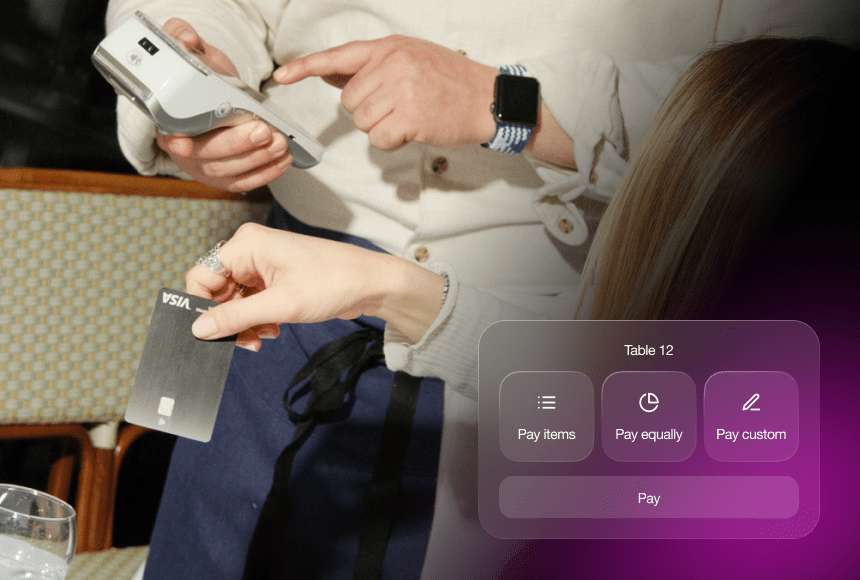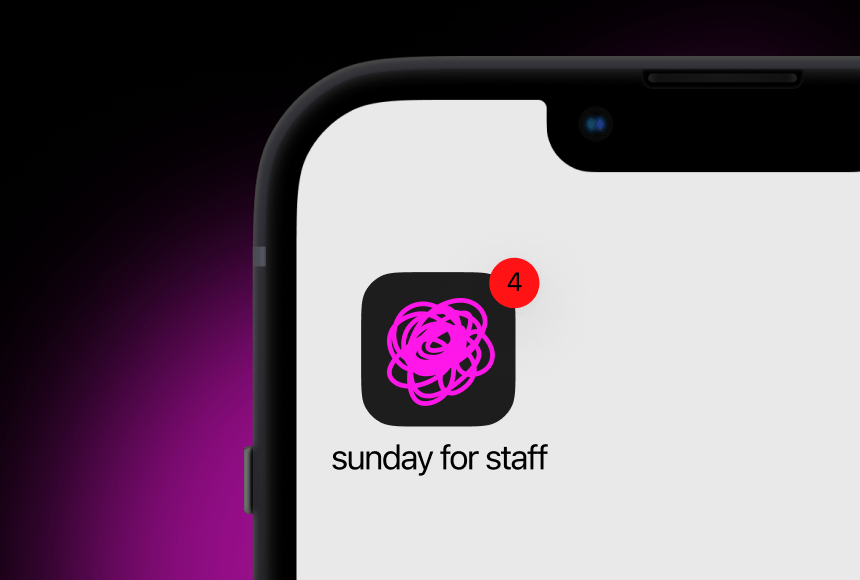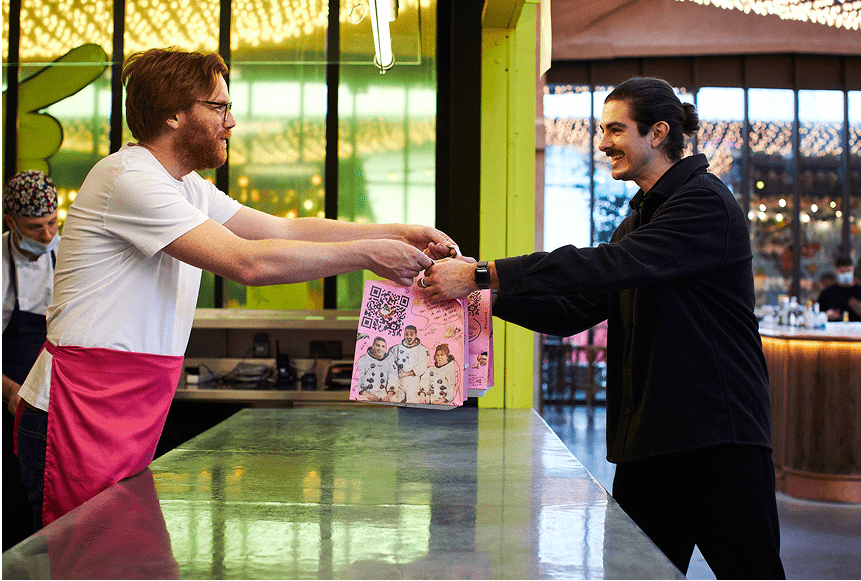
Raise the Bar on Restaurant Payments: Mastering the Modern Smart Terminal
Why Do Smart Terminals Matter for Your Restaurant?
Picture this: a bustling dining room full of cheerful customers, delightful aromas wafting from the kitchen, and your staff navigating tables with quick smiles. Everything seems perfect—until it’s time for the bill. Suddenly, the flow stutters, staff scramble with handheld devices or ask customers to queue at the till, and an awkward hush descends on those formerly happy diners. Sound familiar?
The payment stage might last only a few minutes, but it can significantly affect your customers’ overall experience. In an era when guests can order groceries and hail a taxi with a single tap, it’s no surprise they expect smooth, quick restaurant payments. That’s where a smart terminal comes into play.
A smart terminal is a modern version of the traditional card machine—a device that integrates seamlessly with your restaurant’s point-of-sale system, offers contactless payments (like Apple Pay or Google Pay), prints or emails receipts, and can often integrate with other digital tools. According to Statista, over 65% of UK shoppers use contactless payments weekly. This shift indicates that intelligent, hassle-free transactions aren’t just a bonus—they’re the new norm.
The Basics of Payment Optimisation
Before diving into the specifics of smart terminals, let’s clarify what payment optimisation means. At its core, payment optimisation is about reducing friction during transactions, streamlining processes for both staff and customers, and increasing operational efficiency along the way. Much like ensuring your mise en place is spot on, having a smooth, optimised payment process can be transformative for your restaurant business.
Here’s a quick snapshot of why payment optimisation should be on your menu:
- Faster Table Turnover: If customers settle up more quickly, you can move on to the next service cycle sooner, boosting revenue.
- Enhanced Guest Satisfaction: A swift and seamless payment experience often translates into happier diners who are more likely to leave positive reviews and tips.
- Better Staff Efficiency: When the payment process is straightforward, your team can spend more time recommending the dessert special (and less time fiddling with a device that won’t connect).
- Accurate Financial Records: Automatic reconciliation saves you hours of post-shift number-checking and reduces the chance of human error.
Spotlight on Smart Terminals: Key Features
To envision how a smart terminal optimises payment flow, consider it the sous-chef for your front-of-house: doing a lot of small yet essential tasks, always available, always accurate. Below are some standout features:
- All-in-One Integration: A smart terminal links up with your existing point-of-sale software, letting staff open and close tabs without toggling between different devices. Everything from splitting the bill to applying promotional discounts becomes straightforward.
- Contactless and Mobile Payments: Consumers in the UK are increasingly reliant on contactless options. Payment providers like Apple Pay or Google Pay are already part of daily life, and a smart terminal ensures you can accommodate them effortlessly.
- Customisable Receipts: Crucial for building your brand, many smart terminals allow you to customise receipts with your logo or special offers. Some even give customers a choice between print or email receipts, cutting down on paper waste.
- Data and Analytics: Smart terminals often have built-in analytics tools or reporting dashboards. By reviewing data on peak payment times, table turnover, or tip percentages, you’ll gain insights to refine your service strategies.
- Offline Mode: In case of Wi-Fi disruptions, many smart terminals can switch to offline mode, storing payment information securely until the connection is restored. This reduces downtime and keeps your service running steadily.
Practical Strategies to Boost Payment Workflow Today
Now that we’ve established the value of smart terminals, let’s dig into how you can leverage them. Below are a few practical strategies you can implement—no fluff, just concrete advice from someone who’s been around the block.
1. Train Your Team Like You’d Train a Top-Notch Kitchen Staff
Even the fanciest device won’t do you any good if your team isn’t confident using it. Just as you’d never throw a junior chef into the deep end without a prep session, make sure your staff receive hands-on training. This typically involves:
- Scheduling a dedicated tutorial session with the payment provider.
- Giving staff time to role-play various scenarios (e.g., a customer splitting a bill five ways, dealing with declined payments, or adding a tip).
- Providing a quick reference guide at key stations, so they can troubleshoot on the fly.
A quick perspective check: Training isn’t a one-time event. Whenever new features roll out or you hire fresh faces, update everyone. Confidence with the technology translates into a calm, trustworthy atmosphere for your guests.
2. Integrate QR Code Payment
Many modern smart terminals offer QR code payment options. This system lets diners pull out their phones, scan a code, and settle the bill instantly. It might sound futuristic, but it’s fast becoming standard. A well-known solution—like the one from sunday—makes it even easier by linking the QR code directly to the correct order. Guests can tip, leave a digital signature (if necessary), and even share a Google review without fuss.
What does this do for your workflow?
- Reduces Wait Time: Guests who don’t want to wait to catch a server’s eye can pay at their convenience.
- Lower Staff Investment: Your team can focus on hospitality rather than running back and forth with card machines.
- Boosts Tipping and Reviews: By making it a breeze to add a tip or post a review, QR code payment solutions often prompt customers toward more generous after-meal actions.
3. Refine Your POS and Smart Terminal Setup
To reach a real state of payment bliss, ensure that your existing front- and back-of-house systems ‘talk’ to each other. Imagine a well-coordinated kitchen: the pastry chef knows exactly when the main course is wrapping up, so desserts come out in perfect sync.
- POS Integration: Look for a smart terminal compatible with your POS software. This centralises customer tabs, tables, and items, reducing double keying and errors.
- Inventory Updates: If your terminal can flag items that are low on stock (or sold out), staff won’t accidentally sell something you can’t serve.
- Loyalty Programmes: You can link loyalty or membership schemes to track a customer’s spending, reward them for frequent visits, and encourage future bookings.
When done right, your POS and smart terminal will give you real-time data on everything from best-selling dishes to staff performance—vital intel for making informed decisions.
4. Explore Upselling Opportunities
Your payment process is the final stage of the dining experience, but it doesn’t have to be the end of the conversation. Using integrated prompts on a smart terminal, you can suggest deals for the next visit or highlight new menu items. For instance:
- Gift Vouchers: After payment, a pop-up might offer customers the chance to purchase a gift card for friends or family.
- Pre-Order Specials: If you do takeaway or brunch, gently prompt guests with a discount code or early booking offer.
- Collect Feedback: Use a brief survey to ask diners about their experience. This real-time feedback helps you fine-tune your offerings sooner rather than later.
Clever upselling at the payment stage is much like suggesting a winning wine pairing earlier in the meal—subtle, relevant, and often welcome. No one likes pushy sales tactics, so keep it tasteful and optional.
5. Make Security a Given
When it comes to sensitive data, trust is paramount. A secure smart terminal not only encrypts transactions for compliance, but it also sends a strong message to your customers that you care about their peace of mind. For many diners wary of fraud, visible reliability is as important as the promise of fresh ingredients.
Here’s what to look for:
- PCI Compliance: PCI DSS (Payment Card Industry Data Security Standard) forms the bedrock of payment security. Ensure your terminal and provider uphold these regulations.
- Encryption and Tokenisation: End-to-end encryption scrambles sensitive info from the moment a card is tapped until it’s safely processed. Tokenisation replaces card details with a random token, adding another layer of protection.
- Consistent Updates: Like regularly cleaning burners in your kitchen, software updates are essential for sealing security holes. Pick a provider that swiftly patches vulnerabilities.
Adding a Dash of Automation to Your Operations
The best technology doesn’t just solve one problem—it expands to make multiple tasks easier. A smart terminal should be a jumping-off point for automating your entire workflow, from table management to stock control. Here’s how automation can transform critical tasks:
- Automated Reconciliation: Some systems log every transaction in real time and reconcile totals at the end of the day, so you can skip the headache of balancing the books manually.
- Instant Reporting: Want to know your busiest hour on a Friday? Or the item generating the highest profit margin? Automated reports can show you, enabling quick, data-driven tweaks.
- Integrated Stock Control: In advanced setups, every purchase gets tracked against your inventory. If your steak dinner proved popular, the system will flag the reduction in stock, making reordering easier.
A single piece of hardware, such as a high-quality smart terminal, can act as the nerve centre for all these features, giving you a bigger-picture view of your restaurant’s health.
A Case Study: The Lamb & Pepper Bistro
Let’s illustrate how this all comes together with a hypothetical example: The Lamb & Pepper Bistro in Manchester decided to upgrade its point-of-sale system, adopting a smart terminal that offered contactless payments and integrated online ordering. Here’s how the transition played out:
- Setup: Initial training took one afternoon. Staff quickly learned to start and split bills directly on the device, and patrons were shown how to tap or scan to pay.
- Immediate Impact: Table turnover rose by 12% in the first month, feedback soared on social media, and staff reported fewer errors in processing bills.
- Long-Term Gains: The bistro used data from the system to refine its menu. By identifying the most popular main courses (and cross-referencing sales with feedback forms), they emphasised profitable dishes and reduced less popular ones.
- Customer Loyalty: After each transaction, a prompt offered diners a complimentary appetiser for their next visit if they left a quick review online. Reviews increased by 30%, pulling in more foot traffic.
The Lamb & Pepper Bistro’s experience is a classic example: a simple turnkey switch to a smart terminal developed into broader benefits—happier customers, more efficient staff, and robust improvements to the bottom line.
Pitfalls to Avoid
While adopting a shiny new payment device can feel like the perfect solution, keep an eye out for a few common missteps:
- Overcomplicating the Setup: Some operators install too many bells and whistles at once. Roll out new features steadily so your team isn’t overwhelmed.
- Skipping Staff Training: As we covered, training can’t be a one-time event. Lack of ongoing support leads to confusion and subpar customer service.
- Ignoring User Experience: A cluttered or unintuitive payment screen can slow everything down. Make sure your terminal’s interface is easy for both your team and customers.
- Forgetting the Customer Journey: Don’t just think about payment in isolation. Consider how to integrate it seamlessly into the entire dining experience—from reservation to feedback.
Avoiding these pitfalls ensures you reap the full rewards of your new technology without turning it into a headache.
How a Warm and Welcoming Payment Experience Reflects on Your Brand
Your restaurant may have a Michelin-level menu, but if the final taste that customers walk away with is a clunky, slow payment experience, that’s what they’ll remember. By contrast, a fast, user-centric approach to settling the bill feels gracious. It shows that you respect customers’ time. That courtesy often translates into stronger loyalty and word-of-mouth referrals.
In the UK, where diners have a wide spectrum of culinary options, a smooth checkout can be a key differentiator. Whenever a meal is relaxing from start to finish, people are more likely to leave a tip and recommend your place to friends. The payment stage may merely be the last note—yet it has the power to linger like the memory of a delicious dessert.
How sunday’s QR Code Payments Fuel Efficiency and Speed
Let’s be real: sometimes you only have seconds to make a positive impact. For diners keen to leave once they’ve finished dessert, the speed of payment is everything. That’s where solutions like sunday, which offers QR code pay-at-table options, can drastically reduce friction. With sunday, customers simply scan, tip, and leave a review directly from their smartphone without needing staff to hover with a device. This setup has proven to cut payment times to less than a minute and also encourages more frequent tipping.
It’s not just about speed. Because the system is integrated with your POS, each transaction is assigned to the correct table automatically, preventing accidental mix-ups. Your staff spends less time dealing with separate bills and more time showing hospitality, which is what they do best. Even more enticing, a well-placed prompt can ask diners if they’d like to share their feedback on Google, boosting your online presence.
FAQ: Common Questions About Smart Terminals
What if my internet connection is unreliable?
Many smart terminals feature an offline mode that saves transaction data securely and processes it once you’re back online. This ensures you don’t lose sales or disrupt the dining experience if your connection dips.
Is it expensive to install a smart terminal?
Costs vary depending on the provider and the features. In many cases, you can lease a device or purchase it outright. Integrations with third-party solutions might add fees, but consider the potential boost in efficiency and customer satisfaction a worthwhile investment.
Do I need to change my POS system?
Not necessarily. Most modern smart terminals are designed to integrate with a wide range of POS software. Talk to your provider first, and verify compatibility to ensure a smooth transition.
How secure are these digital transactions?
Security is a top priority, with end-to-end encryption, tokenisation, and PCI DSS compliance as standard for reputable providers. Look for regular software updates and patches to maintain strong digital defences.
Can I still accept cash payments?
Absolutely. Smart terminals simply add more flexibility for customers preferring card or contactless methods. You can continue accepting cash alongside digital payments without any issues.
Will customers be comfortable using QR codes to pay?
Yes, especially if it’s intuitive and well-advertised. The rise of contactless habits has made QR code scanning second nature for many people. If guests are unsure, a short demonstration from staff can quickly ease concerns.
How can I encourage more tips with a smart terminal?
A gentle digital prompt can be very effective. Many terminals allow custom tip suggestions and levels. By presenting options in a polite, unobtrusive way, you remind diners that tipping is welcomed—and this often leads to higher gratuities.
Finishing Touches: Serve Up a Modern Payment Experience
Just like creating a memorable menu, getting payment right requires the right ingredients, a clear process, and a commitment to quality. With a robust smart terminal at the heart of your setup, you’ll speed up service, engage customers more effectively, and build a stronger day-to-day operation.
While technology can’t completely replace good old-fashioned hospitality, it can make your life and your guests’ experiences a lot easier. In a world where diners expect seamless service from start to finish, it’s time to bring your payment workflow up to the standard of your fantastic food. Let a smart terminal enhance your restaurant’s unique character, leaving a lasting impression that keeps customers coming back for more.
Find out more today
Drop us your details below and we’ll reach out within the next 24
The payment terminal to make your operation simpler.
Connected to your POS, we offer the only payment terminal specifically designed for restaurants.




